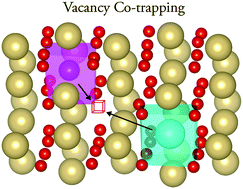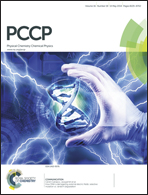Ceria co-doping: synergistic or average effect?
Abstract
Ceria (CeO2) co-doping has been suggested as a means to achieve ionic conductivities that are significantly higher than those in singly doped systems. Rekindled interest in this topic over the last decade has given rise to claims of much improved performance. The present study makes use of computer simulations to investigate the bulk ionic conductivity of rare earth (RE) doped ceria, where RE = Sc, Gd, Sm, Nd and La. The results from the singly doped systems are compared to those from ceria co-doped with Nd/Sm and Sc/La. The pattern that emerges from the conductivity data is consistent with the dominance of local lattice strains from individual defects, rather than the synergistic co-doping effect reported recently, and as a result, no enhancement in the conductivity of co-doped samples is observed.


 Please wait while we load your content...
Please wait while we load your content...